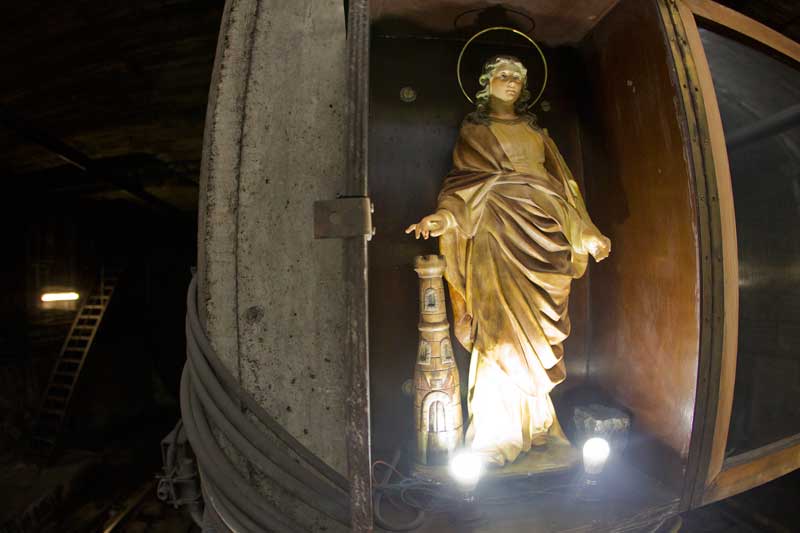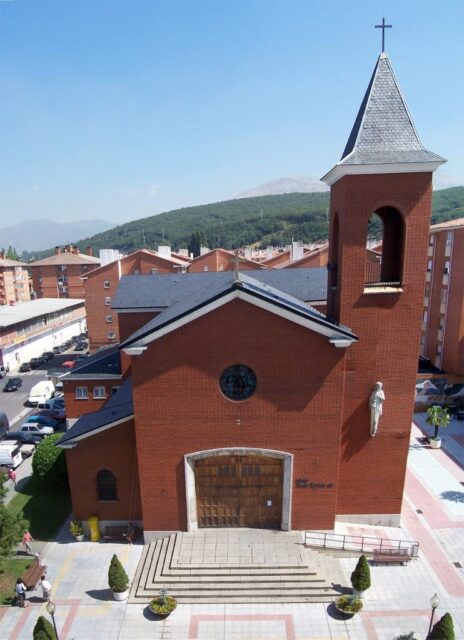EP.10 ROBOTS ARE TRANSFORMING THE FARMING INDUSTRYSwarm of tiny, self-driving robots, underwater two-arm robot, cobots help to identify the gender of chickens and much more...
Farming revolution 🚜 (90 seconds VIDEO that will explain it to you!)What if you could use a swarm of tiny, self-driving robots to tend to every plant individually, instead of relying on large tractors that require a human operator? That's the idea behind autonomous farming, and it could revolutionize the industry. According to Dr. Richard Franklin, a robotics expert at Harper Adams University in the UK, small robots are inherently safer and more efficient than large tractors. By using swarms of tiny machines, farmers can achieve greater precision with fertilizers and pesticides, reduce soil compaction, and cover larger areas of land. As the world's population continues to grow, we'll need to produce more food in less space. Autonomous farming could be the key to meeting this challenge, as it offers increased efficiency, reduced labor costs, and more sustainable farming practices. The job of heavy machinery operators will evolve into overseeing agricultural automation using autonomous machines. By incorporating this technology into farming, we can create a safer, more efficient, and more sustainable food system for generations to come. 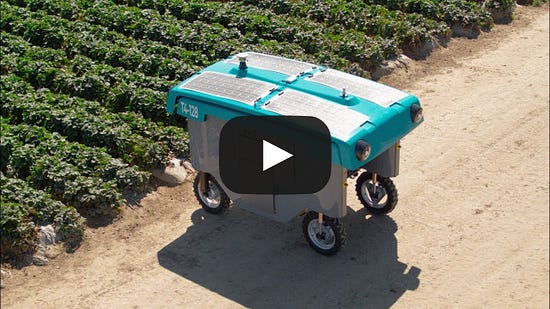 Sorting the garbage using robots! 🗑️♻️Robots have come a long way from being just machines with the ability to move. With advancements in computer vision, artificial intelligence, and integration with external systems, they have become powerful tools for automating not only repetitive tasks but also complex processes. A recent research study has demonstrated that robots can learn how to recycle, using AI to sort and categorize waste. The study shows that tasks that were previously out of reach for robotics are now becoming a reality, with robots potentially being used to help address the pressing issue of waste management and recycling. The numbers speak for themselves: humanity generates about 350 million tonnes of waste every year, and we are notoriously bad at sorting it properly, with less than 10% of it going back to recycling. This is where robots can potentially help, using their ability to learn and adapt to better sort and process waste. Combining robotics with AI and machine learning solutions can help improve the recycling score and bring us one step closer to a more sustainable future. With the technology already showing promise in research studies, it won't be long before we see the first commercially available recycling robots. 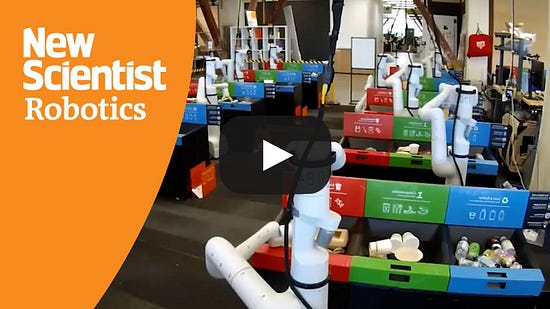 Exploring the underwater world 🌊Exploring the depths of the ocean is an exciting yet challenging task, with the need for sophisticated technology to aid in underwater research. The Sarcos Remotely-Operated-Vehicle (ROV) - Guardian boasts exceptional dexterity, making it ideal for light-work missions and reducing the need to put divers into the water. With 12 degrees of freedom (DoF), the robot can grasp objects with precision and ease, providing a level of accuracy that was once impossible. What sets the Sarcos ROV apart from other underwater robots is its unique design. The system is electronically driven, eliminating the need for heavy hydraulic power unit systems. This makes it possible for the robot to be teleoperated via supervised autonomy, reducing the size, weight, and expense of the device. With the Guardian, underwater inspection is possible at depths of up to 1,000 meters. The robot can operate in different modes, including remote teleoperation and supervised autonomy, making it adaptable to different underwater environments. The Sarcos ROV (Guardian) is a game-changer for underwater exploration and research, providing scientists and researchers with a sophisticated tool to aid in their work. With its advanced technology and exceptional capabilities, Sarcos Robotics is paving the way for the future of underwater robotics. 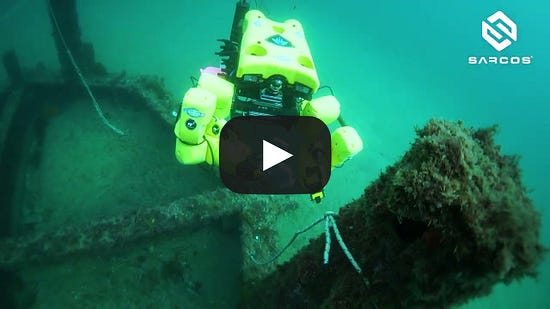 How do robots determine the gender of chickens? 🐣When we think of cobots, we often imagine them working side by side with human workers in manufacturing plants. But cobots have a wide range of applications, including in the agriculture industry. One of the most fascinating examples of this is the gender determination process used by the Respeggt Group. Respeggt is a company that specializes in the production of eggs that don't require the culling of male chicks. In order to do this, they use an application that involves extracting allantoic fluid from eggs using non-invasive suction. The fluid is then analyzed to determine the gender of the chick inside the egg. This method is much more humane than traditional methods, which involve culling male chicks shortly after they hatch. But what's most impressive about this process is the absolute synchronization of the robots involved. The cobots work together seamlessly to perform a variety of activities, including handling the eggs, extracting the fluid, and analyzing the results. This level of cooperation and synchronization is a testament to the power of cobots in industrial applications. By using cobots in this way, Respeggt is able to produce eggs that are more ethical and sustainable. And as the technology continues to improve, we can expect to see even more innovative applications of cobots in the agriculture industry and beyond. 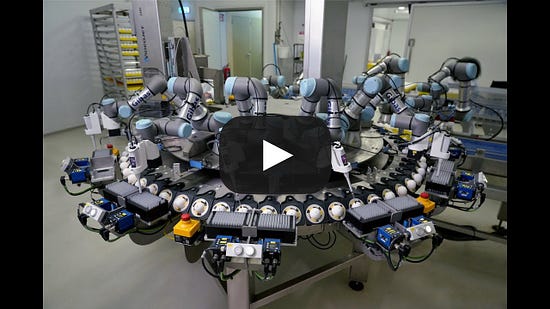 Robotics Application Of The WeekRobotic Palletizing 📦Palletizing is a process in manufacturing and warehousing that involves stacking and arranging products onto pallets for efficient transport and storage. This process is typically performed by industrial robots, which use advanced software and sensors to automate the stacking and arranging of products onto pallets. Types of palletizing that can be performed by robots include:
Overall, palletizing with robots is a highly efficient and cost-effective solution for industries that require the handling of large volumes of products. By using advanced software and sensors, robots can automate the palletizing process and ensure consistent quality and accuracy, while also reducing labor costs and increasing productivity. 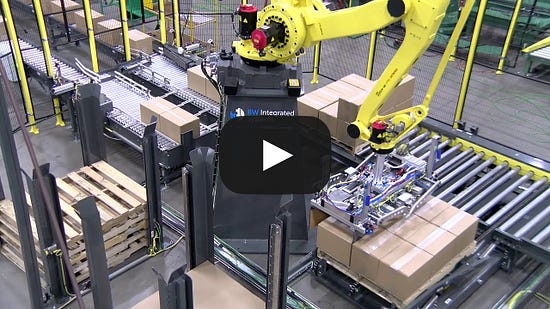 © 2023 Lukas Ziegler |
| ||||||||||||||||||||||||||||||||||||||||||||||



